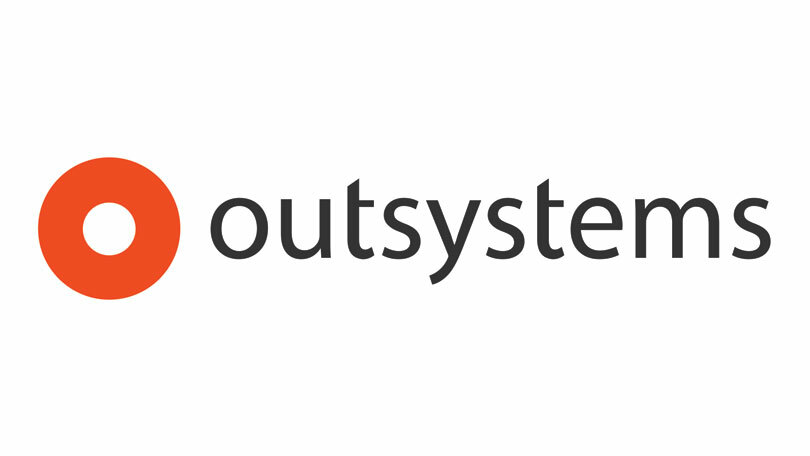OutSystems is a low-code development platform that enables businesses to build and deploy enterprise applications quickly and easily. The platform uses a visual development environment that makes it possible to build applications without writing code.
OutSystems is used by a wide range of businesses, including Fortune 500 companies, government agencies, and small businesses. The platform is known for its ability to help businesses build high-quality applications that are secure, scalable, and reliable.
Here are some of the key features of OutSystems:
Visual development environment: OutSystems uses a visual development environment that makes it easy to build applications without writing code.
Pre-built components: OutSystems includes a number of pre-built components that you can use in your applications.
Integrated DevOps: OutSystems includes a built-in DevOps pipeline that makes it easy to deploy and manage applications.
AI-powered automation: OutSystems uses AI to automate many of the tasks involved in application development, such as code generation and testing.
Cloud-native architecture: OutSystems is built on a cloud-native architecture that makes it easy to scale applications as needed.
OutSystems is a powerful platform that can help businesses of all sizes build and deploy enterprise applications quickly and easily. If you are looking for a low-code development platform that can help you accelerate your application development, OutSystems is a great option.
Moreover, OutSystems’ impact extends beyond its technology. The company’s commitment to fostering a culture of innovation and collaboration has played a pivotal role in its success. With a user community that spans the globe, developers, partners, and customers come together to share knowledge, best practices, and solutions, contributing to a vibrant ecosystem that continuously enhances the platform’s capabilities.
Here are some of the benefits of using OutSystems:
- Increased productivity: OutSystems can help you increase your development productivity by up to 10x.
- Reduced costs: OutSystems can help you reduce your development costs by up to 50%.
- Improved quality: OutSystems can help you improve the quality of your applications by automating many of the tasks involved in testing.
- Faster time to market: OutSystems can help you get your applications to market faster.
- Increased agility: OutSystems can help you increase your agility by making it easy to change and update your applications.
In recent years, OutSystems has gained recognition from industry analysts and stakeholders alike. Its inclusion in Gartner’s Magic Quadrant for Enterprise Low-Code Application Platforms reflects its position as a leader in the low-code development space. The company’s success stories span various industries, from finance and healthcare to manufacturing and government, underscoring its versatility and adaptability across diverse sectors.
Founding History of OutSystems
The founding history of OutSystems is a journey that reflects the vision and determination of its founder, Paulo Rosado, in revolutionizing the software development landscape through low-code innovation. Established in 2001, OutSystems emerged as a response to the challenges inherent in traditional software development methodologies and the need for more agile, efficient, and collaborative approaches.

Paulo Rosado, an experienced software engineer and entrepreneur, recognized the growing gap between business requirements and IT capabilities. Traditional software development processes were often time-consuming, resource-intensive, and complex, resulting in delays and challenges in meeting rapidly changing market demands. Rosado envisioned a platform that would bridge this gap by empowering organizations to rapidly create, deploy, and iterate applications with ease, regardless of their level of coding expertise.
Fueled by this vision, Rosado co-founded OutSystems and embarked on a journey to redefine the way software was built. The core idea was to democratize application development by introducing a low-code platform that enabled developers to visually design applications through a user-friendly interface, reducing the need for manual coding. This marked a departure from the conventional development approach, where coding intricacies often overshadowed the innovation and speed required for digital transformation.
OutSystems’ early days were marked by pioneering efforts to develop a platform that combined the simplicity of visual development with the robustness of traditional coding. The company aimed to empower both seasoned developers and business users to collaboratively build applications that aligned with their specific needs. This inclusivity was a fundamental principle that shaped the platform’s evolution.
Over the years, OutSystems garnered recognition for its unique approach. The company’s commitment to innovation and its focus on enabling agile development processes resonated with businesses seeking to navigate the complexities of digital transformation. OutSystems’ platform found applications across various industries, from financial services and healthcare to manufacturing and government.
The founding history of OutSystems also highlighted the significance of a thriving user community. The company fostered a culture of collaboration, knowledge-sharing, and continuous improvement, drawing insights and contributions from developers, partners, and users worldwide. This community-driven approach not only enriched the platform but also solidified OutSystems’ position as a leader in the low-code development space.
In 2015, OutSystems reached a significant milestone by securing a major investment from investors, including Goldman Sachs and KKR, which underscored the growing recognition of its platform’s potential. The funds enabled the company to accelerate its innovation efforts and expand its global footprint.
The founding history of OutSystems embodies the spirit of innovation, disruption, and resilience. Paulo Rosado’s vision to democratize application development through low-code technology has not only transformed the company but has also redefined how organizations approach digital transformation. From its humble beginnings in 2001 to its status as a leader in the low-code development arena, OutSystems’ journey serves as an inspiration for entrepreneurs and technologists alike, showcasing the power of visionary ideas in reshaping industries.
Business Model of OutSystems – How does OutSystems earn money?
OutSystems offers a cloud-based, low-code application development platform that allows users to build, deploy, and manage enterprise applications quickly and easily. Their business model revolves around providing customers with access to their platform via subscription plans. These plans typically include different features and levels of support based on the customer’s needs.
The core value proposition of OutSystems lies in its ability to accelerate application delivery by allowing developers to create complex applications faster using prebuilt components and templates. This results in reduced time to market, lower costs, and increased productivity for organizations looking to develop new software solutions.
In terms of pricing, OutSystems subscriptions are priced according to:
- The scale and complexity of the apps you build. Measured in Application Objects (AOs), which is the sum of the screens, database tables, and API methods across your apps. A typical medium-sized app is about 150 AOs.
- The number of non-anonymous end users who use your apps. Internal (i.e., employees) and external end users are counted separately.
- The need for additional capabilities. There are options for additional runtime environments, around-the-clock (24×7) support, upgrades to achieve a 99.95% uptime, add-ons for high compliance and security, mobile app shielding, and more.
The platform is offered in three pricing plans: Single App, Multiple Apps, and Large App Portfolio.
- Single App: This plan is free to use for personal and commercial projects. It is limited to 100 users and does not include support or some features, such as mobile app analytics.
- Multiple Apps: The Team plan starts at $1,513 per month, billed annually and is designed for small and medium-sized businesses. It includes support, more users, and additional features, such as mobile app analytics.
- Large App Portfolio: The Enterprise plan is a customized plan and is designed for large enterprises. It includes all of the features of the Team plan, as well as additional features, such as security and compliance. Its price is not available on the website and can only be available, if requested.
In addition to the subscription fees, OutSystems also offers a number of add-on services, such as training, consulting, and support.
Overall, OutSystems has established itself as a leading provider of low-code platforms for rapid application development. By offering a comprehensive set of tools and services designed to streamline application development processes, they enable organizations to innovate faster while reducing risk and cost associated with traditional software development methods.
Valuation, Investors and Funding of OutSystems
Valuation of OutSystems
In Jan 2023, OutSystems raised $228.4 million in funding, primarily led by private equity firm KKR & Co. KKR’s newly-acquired primary shares for a 5.3% stake, reflecting a post-money valuation of $4.3 billion.
This marks the financing round at a significantly reduced valuation of 55% compared to its previous mark of $9.5 billion valuation.
Funding of OutSystems
OutSystems has raised a total of $802.1 million in funding over 8 rounds. Their latest funding was raised on Oct 15, 2022 from a Series G round.
OutSystems’ most recent funding round was a Series G round of $152.1 million raised on Oct 15, 2022 from KKR and Abdiel Capital. This brings the company’s total funding to $802.1 million.
| Round | Date | Amount | Investors |
| Series C | Feb, 2016 | $55 million | Portugal Ventures, North Bridge Venture Partners & Growth Equity, Armilar Venture Partners |
| Series D | June, 2018 | $360 million | KKR and Goldman Sachs |
| Series E | Feb, 2021 | $150 million | Abdiel Capital, Tiger Global |
Competitors of OutSystems
OutSystems operates in a dynamic arena where several competitors vie for market share and innovation. These contenders encompass a mix of established companies and emerging players, each offering unique approaches to rapid application development and digital transformation. Let’s delve into the competitors of OutSystems in more detail:
1. Mendix
Mendix is another low-code development platform that is known for its ease of use and flexibility. It is used by a wide range of businesses, including Fortune 500 companies, government agencies, and small businesses.
2. Appian
Appian is a low-code development platform that is focused on building enterprise applications. It is known for its scalability and security features.
3. Power Apps
Power Apps is a low-code development platform that is part of the Microsoft Power Platform. It is known for its integration with other Microsoft products, such as Microsoft Azure and Microsoft Office 365.
4. Salesforce Platform
Salesforce Platform is a low-code development platform that is focused on building customer relationship management (CRM) applications. It is known for its integration with other Salesforce products, such as Salesforce Sales Cloud and Salesforce Service Cloud.
5. Quickbase
Quickbase is a low-code development platform that is focused on building database-driven applications. It is known for its ease of use and flexibility.
These are just a few of the many low-code development platforms that are available on the market. The best platform for you will depend on your specific needs and requirements.
Here are some of the factors to consider when choosing a low-code development platform:
- Your budget: Low-code development platforms range in price from free to thousands of dollars per month.
- Your needs: What type of applications do you need to build? What are the features and functionality that you need?
- Your skills: How much experience do you have with development? Do you need a platform that is easy to learn and use?
- Your team: Do you have a team of developers? If not, do you need a platform that can be used by non-technical users?
- Your integration needs: Do you need to integrate your applications with other systems? If so, you need to choose a platform that supports the integrations that you need.
Once you have considered these factors, you can start to narrow down your choices and choose the best low-code development platform for your needs.
Also Read: Outreach – Founders, Business Model, Funding & Competitors
To read more content like this, subscribe to our newsletter
Go to the full page to view and submit the form.

